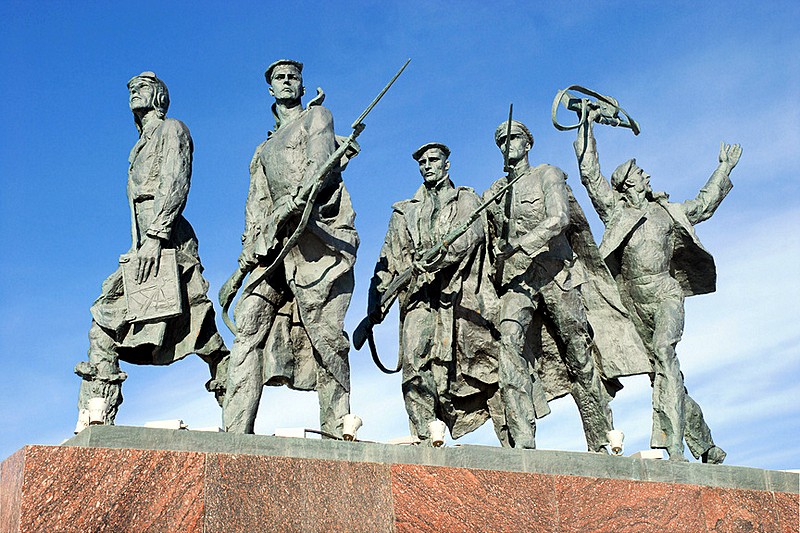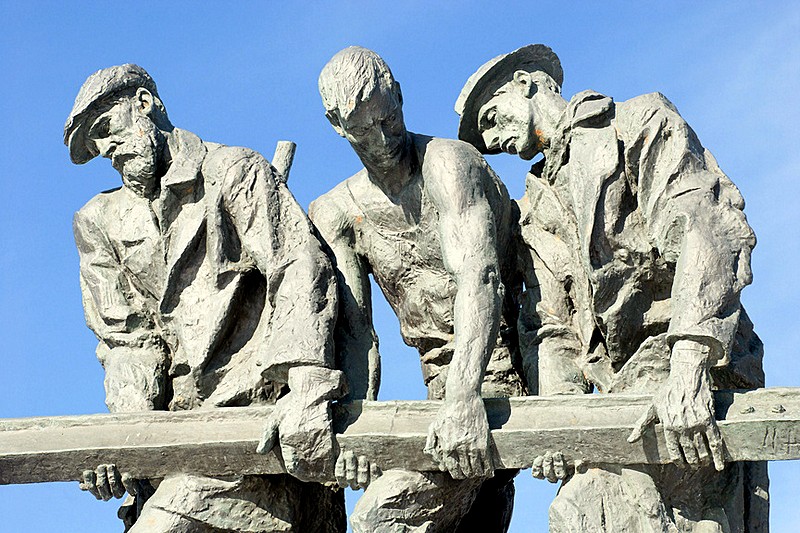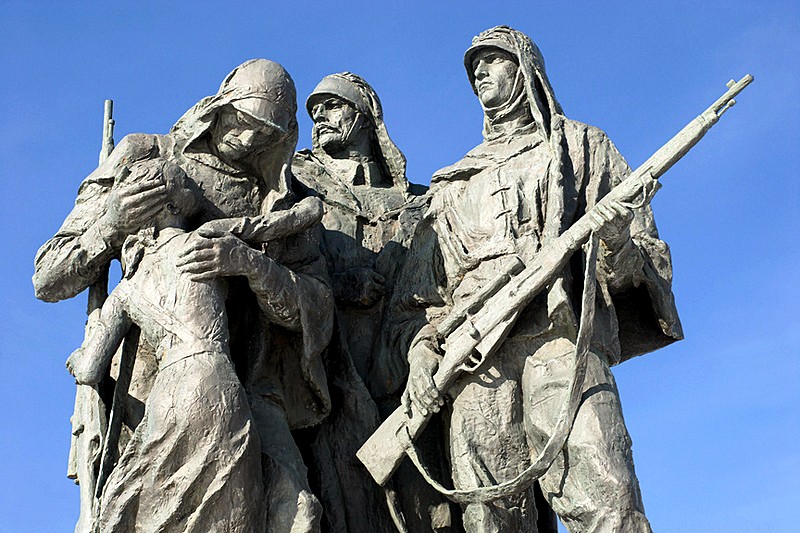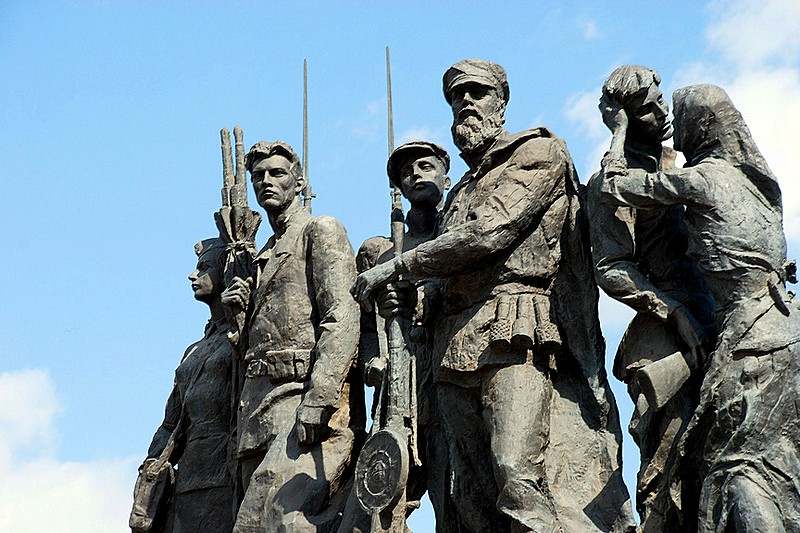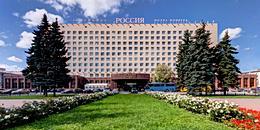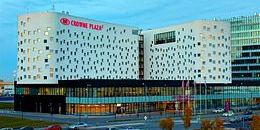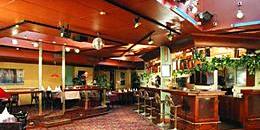Monument to the Heroic Defenders of Leningrad
This powerful and impressive monument was built as the focal point of Ploshchad Pobedy (Victory Square) in the early 1970s to commemorate the heroic efforts of the residents of Leningrad and the soldiers on the Leningrad Front to the repel the Nazis in the 900-day Siege of Leningrad during World War II.
The first plans to build a monument to the World War II victory where announced in 1958 when the city announced an open competition for the design of the monument. There were 44 entries, according to B. Isacheko in his book 20th Century St. Petersburg Architects.
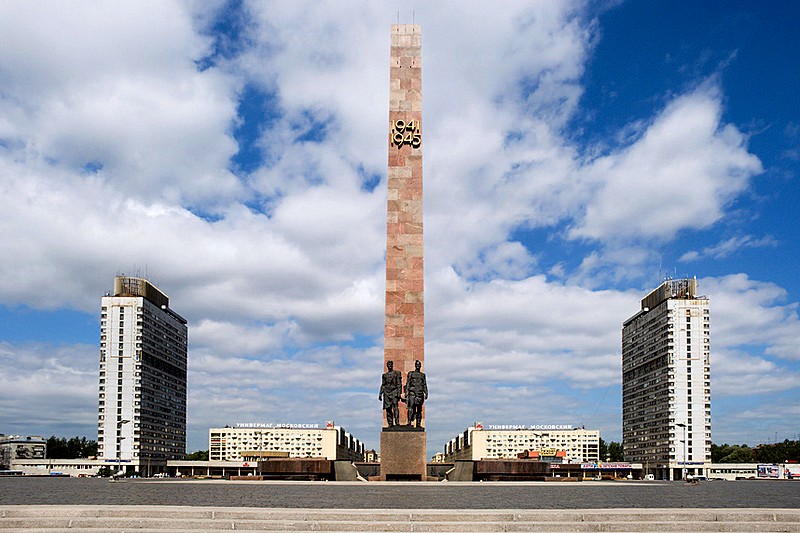
Decorated Russian architect Sergei Speransky won the competition with his knowledge of city construction design and the pervasiveness of the theme of World War II victory in his art. As early as 1946, he was active in the restoration of Minsk and the creation of a World War II monument there.
His competition-winning design for Ploshchad Pobedy was highlighted by a broken ring surrounding a high-level composition dedicated to the Leningrad citizen's successful efforts to repel the terrible 900-day Nazi siege during World War II. A monument was designed to rise up from the center of the ring, flanked on the western and eastern sides by the horizontal ray buildings in the fold of the massive and Stalinesque Moscow Prospekt and the tall towers at the intersection of the square and the prospekt.
The square was formally named Ploshchad Pobedy in 1962. Up until then it had been named Sredney Rogatki Ploshchad.
After the completion of construction on several nine-story apartment buildings along Moscow Prospekt near Ploshchad Pobedy, a second competition was announced for the monument, which was by then called "The Monument to the Heroic Defenders of Leningrad." This time more than 80 applicants participated, but Speransky and his team nevertheless prevailed with their design "Eternal Flame of Our Memory."
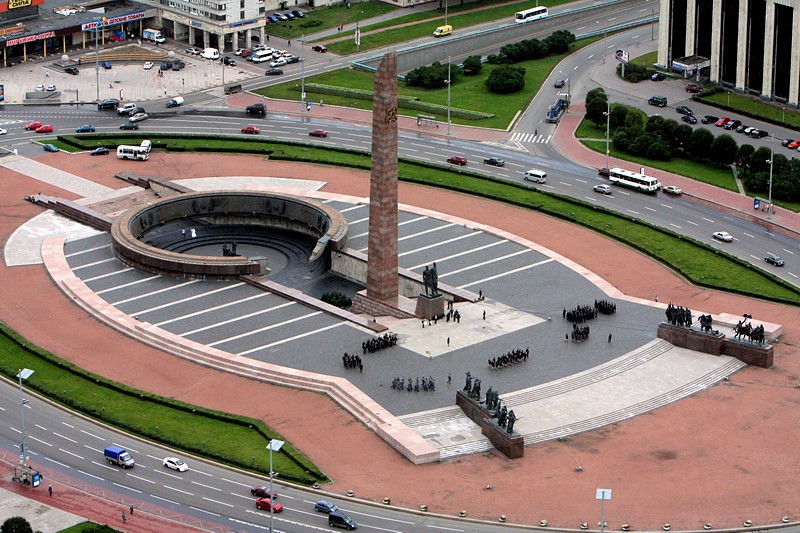
Their plan called for a parade-like entry or gateway into the Hero City from the south, from the Soviet capital Moscow and Pulkovo Airport, at the approximate point where the city's defensive lines held back the Nazis in World War II. It also focused on the aesthetic pattern and unique architectural style of Leningrad. It maintained a classical strictness, clarity and balancing of its various aspects and proportions with the parameters of the older city. The idea and design drew from historic St. Petersburg sites Mars Field and Palace Square, and combined modernity with the best spiritual and artistic traditions of the city.
The tall and clean obelisk, which rises up from the broken ring design will surely attract your attention if you enter St. Petersburg from the airport or from E-95 highway. The sculptural ensemble placed at the pedestal of the obelisk is one of the best examples of Soviet monumental art dedicated to World War II Victory.
The sobering space inside the broken ring is lit with gas torches. Engravings on the walls of the monument are dedicated to the nationwide recognition of the courage shown by the defenders of Leningrad. Inside the monument, in a vast underground memorial hall, there is an exhibition devoted to the Siege. English-speaking guides are usually available upon request. Pay special attention to the detailed map of Leningrad defenses and the short documentary. Pay attention also to the beautiful mosaics on the eastern and western walls of the hall.
On the outside, up a short flight of stairs from the exhibition, you can see the sculptures representing soldiers, sailors and civilians who did not surrender to the Nazis despite hunger, cold and constant bombardment.
The author of the sculptures M. Anikushin powerfully depicts with raw emotion the story of the great feat of the people of Leningrad and the soldiers on the Leningrad front.


